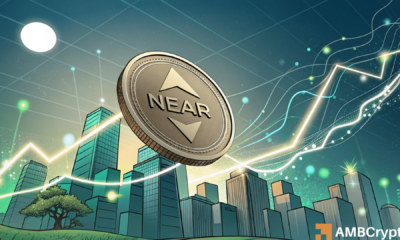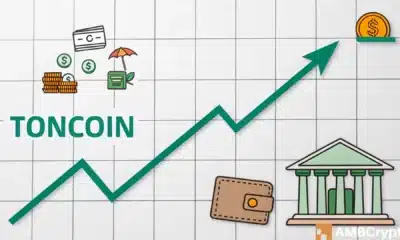How Uniswap looks to extend its dominance

- Uniswap introduced UniswapX to address its security and liquidity challenges.
- Other DEXes still lagged behind the project despite the drop in network growth.
In a 17 July update, the decentralized exchange Uniswap [UNI] announced that it was improving its on-chain trading with an upgraded protocol called “UniswapX.” According to the blog post, the Hayden Adams-led project gave reasons for expanding to a beta version.
Realistic or not, here’s UNI’s market cap in BTC’s terms
First, Uniswap noted that its objective to expand beyond operating on Ethereum [ETH] was vital to the move. When Uniswap launched in 2018, its only focus was swapping on the Ethereum network.
Integrating the “X” factor
However, the recent introduction of the Uniswap wallet aims at embracing exchange on multiple chains. And some of these include Polygon [MATIC] and the BNB Chain.
As a result of that, the Automated Market Maker (AMM) opined that it was necessary to develop UniswapX. The blog post went on to note that the new protocol would enable gas-free swapping, better pricing, and protection against Maximal Extractable Value (MEV). Uniswap explained that,
“With UniswapX, swappers will be able to use the Uniswap interface without worrying whether they’re getting the best price and transactions will always be transparently recorded and settled onchain.”
Following the update, Santiment showed that Uniswap’s development activity was in tune with the announcement. At press time, the metric had increased to 22.69.
The development activity measures the public GitHub repositories attached to a project. Therefore, the hike suggested that developers were committed to upgrades on the Uniswap network.
When it comes to network growth, the same cannot be said. At the time of writing, network growth had fallen sharply. Typically, the metric gauges the rate of adoption by looking at the influx of new addresses into an ecosystem.
New users decrease, but UNI stays king
When network growth increases, it means that a project’s traction is impressive. But the decline, like in Uniswap’s case, means there were not many new addresses, and transactions by new users were not over the roof.
However, one area that Uniswap has continued to excel in is the Decentralized Exchange (DEX) category of the market. As of this writing, Token Terminal showed that Uniswap was the leading exchange in terms of fees generated.
How much are 1,10,100 UNIs worth today?
With $27.1 million made in the last 30 days, Uniswap was far above its competitors including PancakeSwap [CAKE] and Curve Finance [CRV]. For instance, Curve’s fees within the same period were far below Uniswap’s at $2.2 million. PancakeSwap did not fare better at $3.8 million.
As it stands, Uniswap might extend its dominance in the DEX market. And with UniswapX looking to improve on-chain liquidity venues for swappers, then others might need to offer more or match the project.








